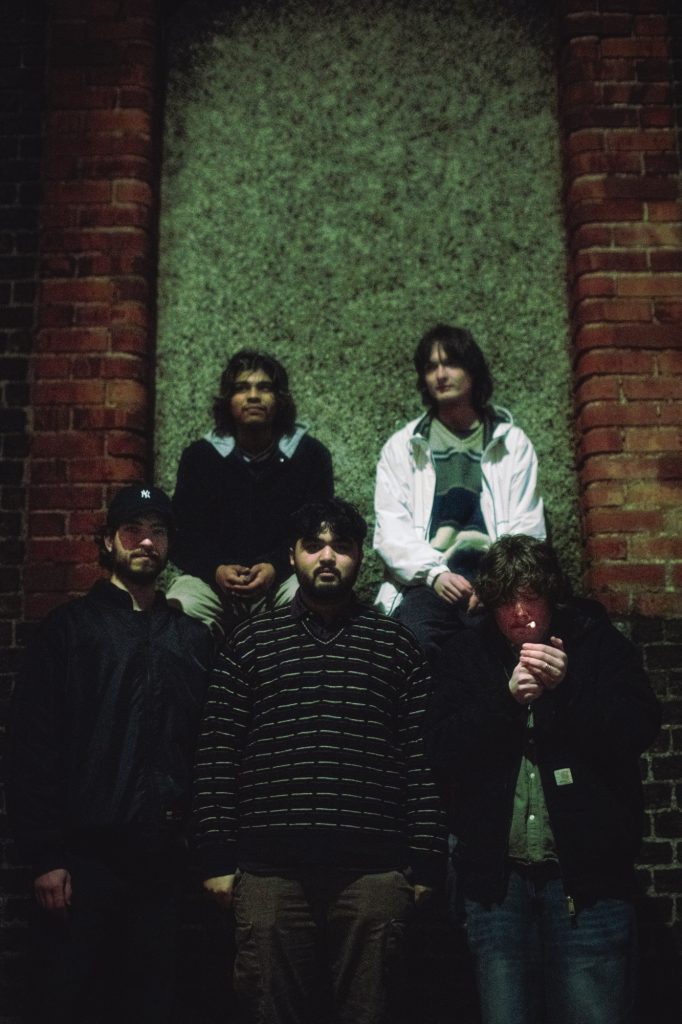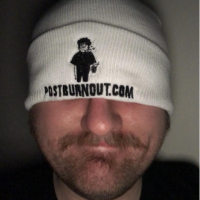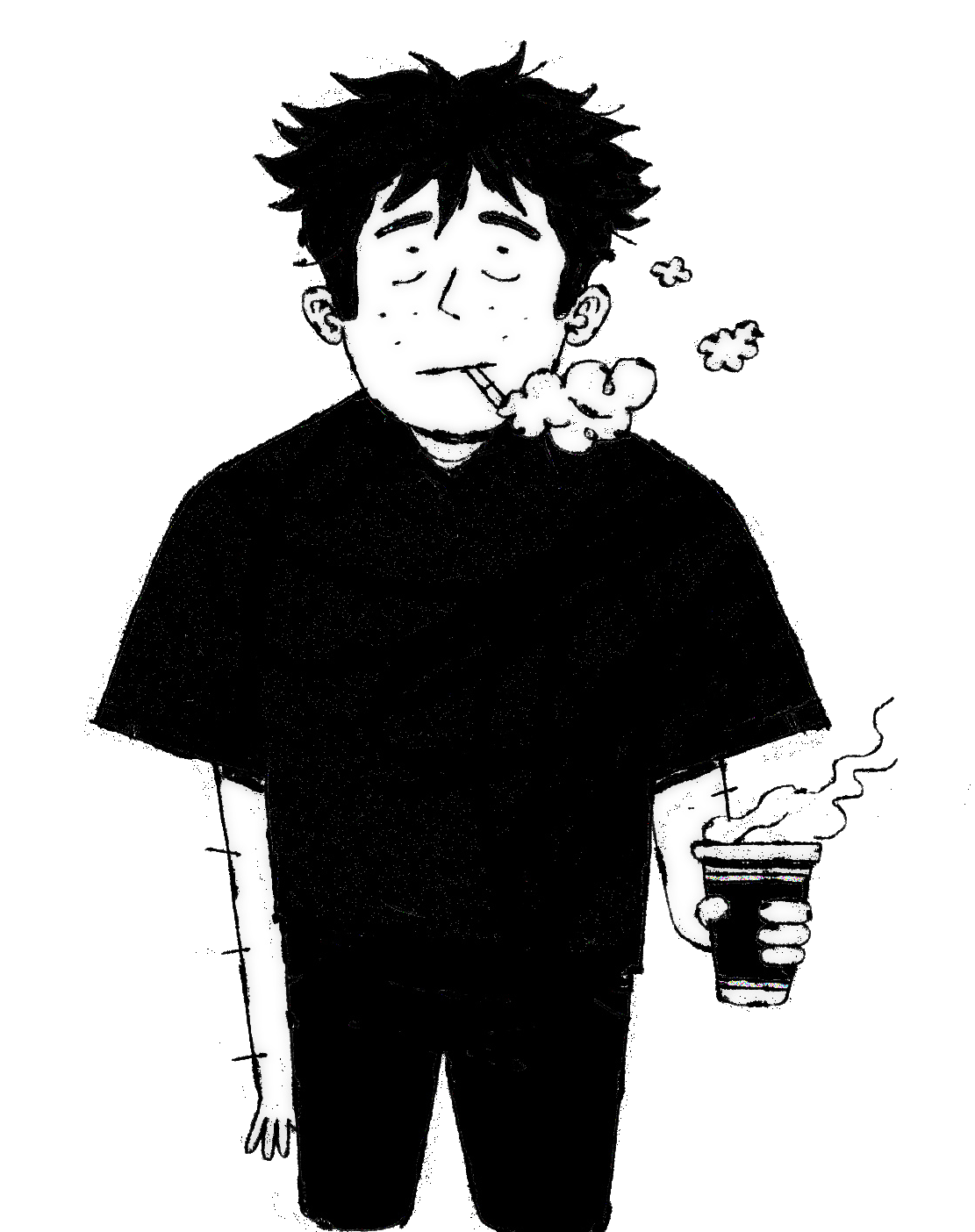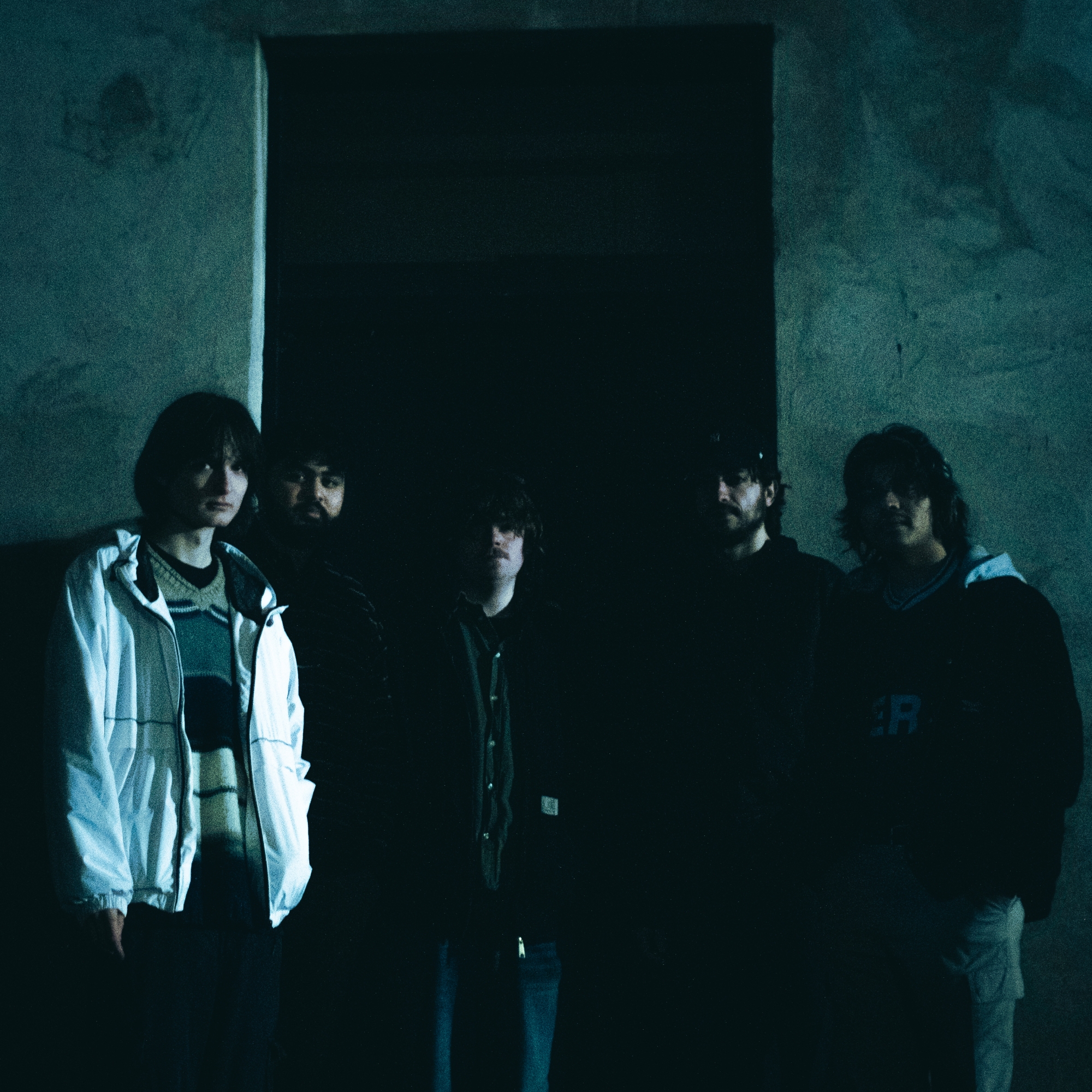AJ Das is a producer and musician that is probably best known as the vocalist and guitarist of the band Fulvetta, who blend hard rock with shoegaze. As a kid, AJ grew up listening to the popular alt music of the 2000s. “I grew up listening to pop-punk, emo, all that sort of jazz,” AJ tells Post-Burnout. “Later down the line, I found My Bloody Valentine, and started orgasming because of how beautiful it is.”
AJ decided to start a new project that blended his onanistic love of shoegaze with the music of his youth. “Music-wise, when I was initially pooling together the members of the band, I wanted to get people who were familiar with the genre,” he explains.
The first member selected was Ignas Baranauskas of King Cara and Skyless on lead guitar. “I auditioned to be in AJ’s old band a year ago, and I came runner-up,” Ignas explains. “But, you know, that band ended up breaking up, so it worked out in the end. AJ asked me to play lead guitar for this project.”
Then came bassist Sean O’Reilly. “For me, AJ recorded my other band, SNAFU, in Windmill Lane for his assignment, and then AJ was looking for bassists or something and remembered me, and now here I am, getting interviewed,” Sean says.
Next, they wanted to add a synth player, who came in the form of Rohan Bhattacharya. “I met AJ in first year [of college], through mutual friends, and reached out,” Rohan says. “I think I auditioned, right?” “Did you audition?” AJ asks. “I thought you just sent me on stuff, like, ‘Here’s some ideas I have. Let’s see what you can cook up.’ I was like, ‘Ah, this is cool!’”
The biggest hurdle for the band was getting a drummer. After a long trial period, they landed on Gabriel Motos. “I found AJ,” Gabriel says. “We’d gone through a load of drummers,” AJ explains. “They were good…” “No, they all ghosted us. They were shit,” Ignas interjects. “Good at drumming; not very good at being in a band.”
“Some of them were really busy, to be fair,” AJ diplomatically adds before continuing, “Then we were looking for a drummer for ages, and I just kept putting it up on my story and the band’s story, and we had posters around, and one day Gabby just replied to me and said, ‘I’m your man!”
Whilst the members have been a part of gazey projects in the past, we asked how they initially felt about the marriage of gaze and emo that AJ was suggesting. “I think one of our biggest strengths is that we’re all fans of music,” Rohan says. “I know that sounds very shallow, but we are really, really enthusiastic about listening to music, as well as performing and creating it, and I think that whole mix of making music that we like listening to is the main driving force. The reason our music is good for us is because we think it sounds good. If other people like it, that’s a great feeling to have, but, at the end of the day, we’re only trying to please ourselves; we’re not trying to make it for anyone else.”
“I was a little bit later to the game. I mainly listened to just pop music and whatever was on the radio until I was, maybe, seventeen,” Ignas responds. “Then I started getting into hip-hop, and from there, I kind of just speedran the pop-punk-to-emo-to-shoegaze-to-dreampop pipeline. I ended up studying music, eventually.”
“For me, it was slightly different, I guess,” Rohan says. “Like, I was thirteen/fourteen, listening to all the mall goth: Panic! At The Disco, Fall Out Boy, My Chemical Romance, all that ‘emo’ music, if you can call it that. [Laughs] Then I started listening to more My Bloody Valentine, Have a Nice Life, and more in that dreamy space. I think it was my dad who showed me my first shoegaze record. It was a Mazzy Star song. That’s crazy.” “Your dad’s cool!” says AJ with awe. “I have a cool dad!” Rohan proudly proclaims.
“I started with Tidal Fight,” Gabriel says. “I come from death metal, metal, hardcore. One day, I discovered Tidal Fight. From Tidal Fight, I started listening to other bands, like Narrow Head and all that, and was like, ‘This is my music!’”
“For me, it’s like a mix of AJ and Rohan,” Sean says. “I had a pop-punk phase and a few bands where I was doing that when I was, like, thirteen to sixteen. Then I started experimenting with other genres; more of the niche ones on the internet or whatever, like Slint, post-rock, and noise-rock or whatever.
“I’m not a huge… – I’ll say it now [that] I’m in a shoegaze band – …I’m not a huge shoegazer. I get away with it because I play bass, and I don’t need effects, and I just scream, but I’m not the shoegaze guy. Everybody else in the band just carries me and I just pretend I’m emo, and it kind of works out.”

Courtesy of AJ Das
One of the unique aspects of Picture Postcard is the addition of a synthesiser, which is not particularly common in the two main genres that the band take influence from. “I’ve been playing piano for as long as I can remember,” Rohan says. “Genuinely. I think I started lessons when I was four, and I only really stopped when I was fifteen/sixteen. So, I always had a deep understanding of music in terms of black and white keys.
“I honestly got into synth about a year-and-a-half ago/two years ago, with the inception of the project, and a lot of the sounds that I am exploring are very much rooted in the shoegaze sound, where it’s very distorted, reverb-drowning sounds. I am a guitar player, as well, so most of my familiarity with the genre came mainly from guitar. So, having that sound of the guitar, if you want to call it that, with the flexibility and the music knowledge I could apply on a chromatic keyboard, it was the answer to a question I hadn’t asked yet.”
The addition of the synth has also had a knock-on effect on how the other members approach their instruments and styles of play. “Before this band, I would be mostly writing atmospheric, soundscape-y kind of stuff,” Ignas says. “But with the addition of synths and Sean and AJ’s heavy, drop-tuning guitars, I’ve kind of had to find a place that’s somewhere in the middle, between complementing their heavy sound whilst also adding to the atmosphere alongside the synths, and that’s one of the really fun things about this project for me.”
“For me, for playing bass in this, it’s kind of similar enough to my other bands, because there’s definitely a shared influence,” Sean says. “But, for this, I rely on screaming, vocally, and, bass-wise, I have different tones, you know? I have heavier stuff because some of our songs would get heavier than SNAFU songs or whatever. Then I have chiller stuff. I have stuff with reverb on it if I’m feeling weird. […] Tones. Tones is a big thing. Tones is in the balls.”
As mentioned in the opening paragraph, AJ is an engineer and producer, and he feels that mixing Picture Postcard has made him up his game in this regard. “I’m early enough in my production career, so I haven’t worked with loads of stuff,” he says. “But doing this kind of stuff has made me understand myself as a producer, as well, and how much I like all the layers and stuff. Going forward, I’m going to be working with a few more bands, and we’re definitely going to be layering and layering and layering stuff.”
With a band full of well-seasoned musicians, we ask them how they feel Picture Postcard differs from everything else they have done. “If I can answer, it would be the [professionalism] over everything else,” Rohan responds. “I definitely think, going into the project, we had a clear structure of what we wanted to do with having releases out and spending a lot of time gigging.
“We haven’t gotten a lot of time to realise that, but we are starting to realise that more and more, recently. We’ve been gigging more. We had a big release recently. Our first single went really well, and I think that’s because we set up everything beforehand. We weren’t failing and learning; we already did all of our failing in our other projects, and this is just applying everything we’ve learnt in one go, and it’s been working out really well, I think.”
The release that Rohan is referring to is Picture Postcard’s debut single, “October,” which dropped at the end of February. According to the band, the decision to record and release “October” as their first track wasn’t a particularly aspirational one; they just needed to have a single out for the pragmatic reason of getting booked, as promoters and venues want a sign of an act’s music before dealing with them. As “October” was finished and ready to go, they just went for that.
“I think the first practice would’ve been in the summer of last year,” AJ says of the timeline that led to finishing it. “June/July,” Rohan elucidates. “We had so many issues with drummers and such, just trying to keep a cohesive line-up,” AJ continues. “Then once we got Gabby here, we kind of got on our feet, and we had a gig in December, and then we had a gig lined up in February, like, months in advance. We started recording ‘October’ about… – when? – …about January, I want to say.” “January? December!” Sean responds. “You did drums before Christmas and the rest over the Christmas break,” Rohan clarifies.
Despite being less than a year old, Picture Postcard are full of dedicated and talented members who have a master plan for their releases and gigs, whilst acknowledging the fortunate coincidence of the resurgence of emo and shoegaze in the Irish music scene as potentially helping to elevate them. While that can explain their efficiency and expedience, the element that they feel will give them longevity is their interpersonal relationships.
“We’re a relatively new band, but we’re all friends,” AJ says before looking at the others for confirmation. “Guys? We’re all friends?” “Speak for yourself, mate!” chimes Ignas. “It’s cool to make music with people you enjoy spending time with,” Sean says. “And music’s a part of it, but, also, the amount of craic you have, it’s a great experience!”
Picture Postcard’s debut single, “October,” is on all streaming platforms now. You can keep up with the band through their website.
Tune into POSTBURNOUT.COM Interviews… at 21:00 (IST) to hear this interview in full. Available on YouTube, Spotify, Apple Podcasts, and Amazon Music Podcasts.

Aaron Kavanagh is the Founder and Editor-in-Chief of Post-Burnout. His writing can also be found in the Irish Daily Star, Buzz.ie, Totally Dublin, The GOO, Headstuff, New Noise Magazine, XS Noize, DSCVRD and more.

 POST-BURNOUT
POST-BURNOUT